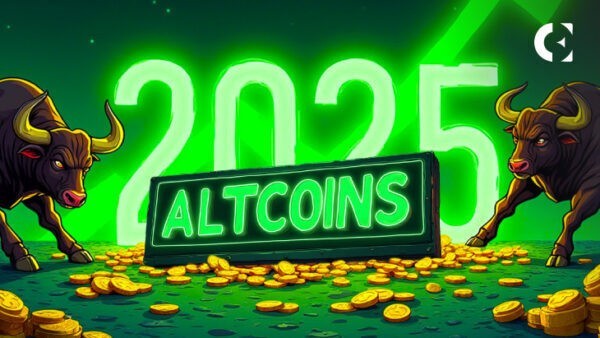Cardano Beats Ethereum In Core Dev Activity: Will This Power An ADA Price Surge?
Cardano now leads in core developer activity, making it the most actively developed blockchain.
NurPhoto via Getty ImagesCardano surpassed Ethereum in core developer activity this month, making it the most actively developed blockchain, according to data from Cryptometheus. Over the past year, Cardano recorded 21,439 GitHub commits, representing developer activity, highlighting its strong focus on continuous innovation.
This surge in developer engagement could be a bullish signal for Cardano’s native cryptocurrency, ADA. As Cardano's technical ecosystem expands, the question remains whether this momentum will translate into price gains for ADA. This article will explore what this developer surge means for Cardano, how Cardano differs from Ethereum and whether it could drive a price increase for ADA.
Cardano’s ongoing development follows a step-by-step roadmap. The process began with the Byron era, which focused on building the network’s foundation. During this phase, users could buy and sell ADA, Cardano’s native token, while the network relied on a Proof of Stake system called Ouroboros for security. Next came the Shelley era, where network control shifted from a few central nodes to a broader group of community participants. This change improved security and resilience by reducing reliance on a small group of operators.
The Goguen era brought smart contract functionality, allowing developers to build decentralized applications on Cardano. It also enabled support for various digital assets, including standard tokens and non-fungible tokens, making the network more versatile. The Basho era then focused on scalability, using sidechains, which are separate but connected blockchains, to enhance performance and handle more transactions. Cardano is now in the Voltaire era, which emphasizes self-governance. This phase includes a voting and treasury system that lets users influence network upgrades and decide how funds are spent, giving the community greater control over Cardano’s future.
Cardano became the most active blockchain in core developer work, with 21,143 GitHub updates spread across 550 key projects during the tracked period. This high level of engagement reflects a strong focus on maintaining and improving Cardano’s core technology.
However, despite this achievement, Cardano has seen a decline in overall ecosystem engagement, with active developers dropping by 37.72% month-over-month and total commit contributions decreasing by 65.68%. This suggests that while Cardano’s core is being actively developed, its broader ecosystem may be losing momentum.
On the other hand, Eethereum remains one of the most active blockchain projects but has experienced a decline in core developer activity. Over the same period, Ethereum recorded 20,752 GitHub commits across 278 core repositories, placing it second in developer engagement. The Ethereum ecosystem is vast, with 1,545 active projects and 132,505 public GitHub repositories. However, developer participation has also declined, with a 40.56% drop in active developers and a 39.33% reduction in total commit contributions. These numbers show that Ethereum is facing challenges in maintaining developer interest, even with its large user base and established ecosystem.
These trends highlight a key difference between the two ecosystems. Cardano maintains strong core development but may struggle to keep developers engaged in its broader ecosystem. Despite its massive ecosystem, Ethereum also faces a slowdown in developer contributions.
Several factors affect developer activity in blockchain networks. One is how decisions are made within the projects. For Ethereum, internal conflicts over upgrades and direction have caused delays and frustration among developers. Cardano’s slow, research-focused approach can also discourage developers who want to build and launch projects quickly.
Another major factor is competition from newer blockchains. These networks offer faster transactions and lower fees, making them more attractive to developers who want to work on cutting-edge technology. As developers migrate between blockchains, Ethereum and Cardano may struggle to keep their core developer communities active.
Stephen Flanders argues that the exodus of blockchain developers is a natural consequence of speculative excesses in the crypto sector. He highlights that many developers were drawn to blockchain during the 2021-2022 bull market, but interest waned as speculative projects underperformed and funding shifted to other sectors, particularly AI.
Other analysts maintain a more optimistic outlook. Developer Binji Pande attributes developer decline to an overemphasis on hype-driven projects rather than meaningful, value-adding solutions, making it less rewarding for developers to contribute. To reverse this trend, he suggests focusing on building real-world applications that solve user problems, which could attract more developers and ensure long-term growth.
ADA is trading around $0.81, reflecting a 50% decline from its December 2024 peak.
Despite the decline, predictions for 2025 vary. Some expect ADA to trade between $0.66 and $1.88, while bullish scenarios target up to $2.36. These forecasts hinge on variable factors like increased adoption and positive market sentiment.
Cardano’s future growth depends on its ability to fully deploy its smart contract ecosystem and attract users for its decentralized applications. The blockchain’s unique approach to development is seen as a potential advantage, but competition from other platforms remains intense. While optimism exists for Cardano’s long-term potential, the price will ultimately be driven by unpredictable factors like market conditions and overall demand.
Cardano now leads in core developer activity, making it the most actively developed blockchain. This could be a positive sign for its cryptocurrency, ADA. However, Cardano is struggling with a drop in overall developer engagement, which may impact its future growth.
Ethereum, the second most active blockchain, also saw a decline in developer activity despite its massive ecosystem. Both Cardano and Ethereum need to keep developers interested to stay competitive.
Developer activity is crucial for cryptocurrencies because it reflects the ongoing improvement, security and innovation of a blockchain network. Active developers ensure the platform remains functional, secure and competitive.
Increased development activity can lead to a price surge by boosting investor confidence and attracting users to a blockchain network. However, it does not guarantee higher prices, as other factors play a role.
How Does Cardano’s Development Compare To Ethereum's?
Although Cardano surpassed Ethereum in core developer activity, Ethereum maintains a larger ecosystem with more active projects and developers, maintaining its dominance.










